 |
Radione mod. R2 Austria - 1939 |
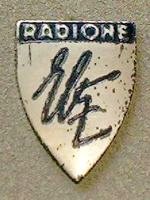 |
|
|
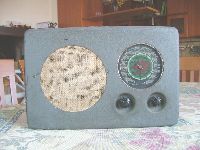 |
Italiano
|
|
|
|
|||
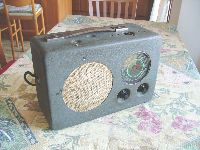 |
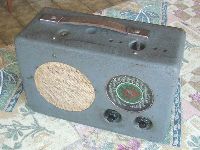 |
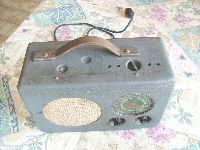 |
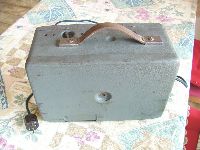 |
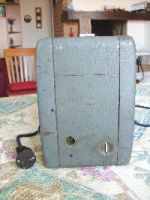 |
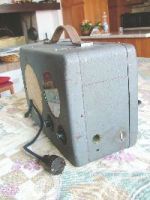 |
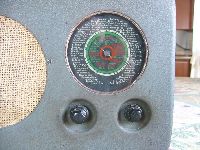 |
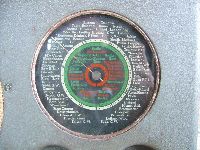 |
|
Questo ricevitore venne prodotto in migliaia di esemplari a Vienna, Austria dall'azienda dell'Ing. Nikolaus Eltz, dal 1939 al 1945. L'esemplare visibile nelle foto ha il numero di matricola: 11777. Il circuito della R2 era del tipo supereterodina con frequenza intermedia a 469,5 kHz e riceveva in modulazione di ampiezza le Onde Lunghe, le Onde Medie e le Onde Corte. Nel circuito venivano impiegate le valvole metalliche: EF13, ECH11, EF12, EBC11, EDD11, EZ11. La radio poteva essere alimentata sia tramite la rete elettrica (110-150-190-220 Vac) che dalle batterie degli autoveicoli (6 Vcc) utilizzando il survoltore con vibratore installato nell'apparecchio. L'altoparlante era del tipo magnetodinamico (con magnete permanente) e il mobile metallico era dotato di maniglia di cuoio per il trasporto. Le dimensioni erano: 35 - 23.5 - 17.5 cm e il peso era di 10 kg. Durante la seconda guerra mondiale questo apparecchio radio era molto diffuso nella Wehrmacht (l'esercito tedesco) la quale lo installava negli spacci e nelle mense delle caserme per permettere ai soldati di ascoltare notizie e programmi musicali. Ne esisteva anche una versione utilizzata dalla Kriegsmarine (la marina militare tedesca) come ricevitore ausiliario nelle navi e nei sommergibili. IK3HIAŠ2005-2025. |
|||
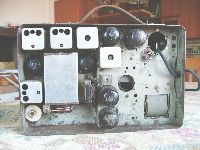 |
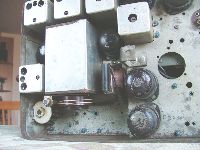 |
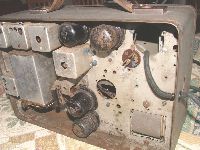 |
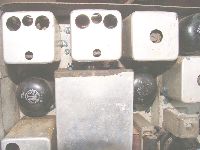 |
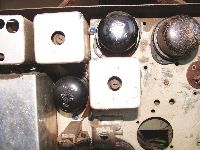 |
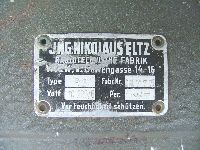 |
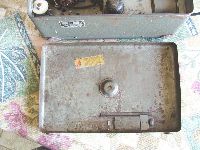 |
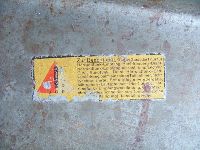 |
|
This receiver was produced in thousands of units in Vienna, Austria by the company of Eng. Nikolaus Eltz, from 1939 to 1945. The unit visible in the photos has the serial number: 11777. The R2 circuit was of the superheterodyne type with an intermediate frequency of 469.5 kHz and received Long Waves, Medium Waves and Short Waves in amplitude modulation. Metal valves were used in the circuit: EF13, ECH11, EF12, EBC11, EDD11, EZ11. The radio could be powered either by the electrical network (110-150-190-220 Vac) or by car batteries (6 Vdc) using the booster with vibrator installed in the device. The speaker was a magnetodynamic type (with permanent magnet) and the metal cabinet was equipped with a leather handle for carrying. The dimensions were: 13.78 - 9.25 - 6.89 inch and the weight was 22.0 lbs. During the Second World War this radio was very popular in the Wehrmacht (the German army) which installed it in the canteens and mess halls of the barracks to allow the soldiers to listen to news and music programs. There was also a version used by the Kriegsmarine (the German navy) as an auxiliary receiver on ships and submarines. IK3HIAŠ2005-2025. |
|||
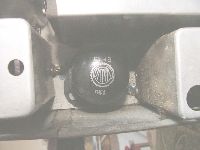 |
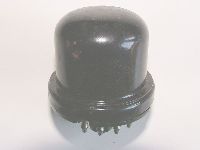 |
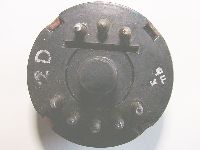 |
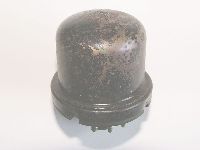 |
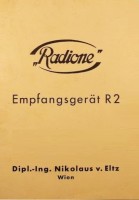 |
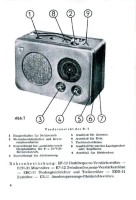 |
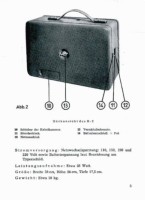 |
 |
|
Back to the top of the page |
|||